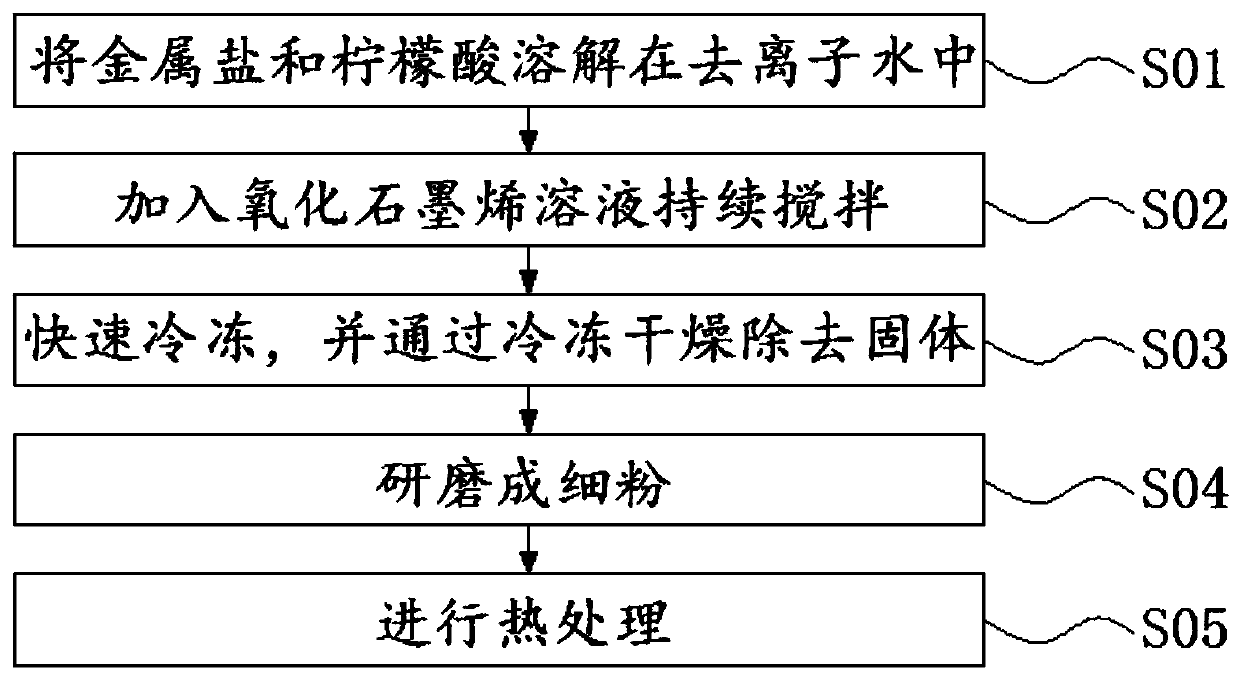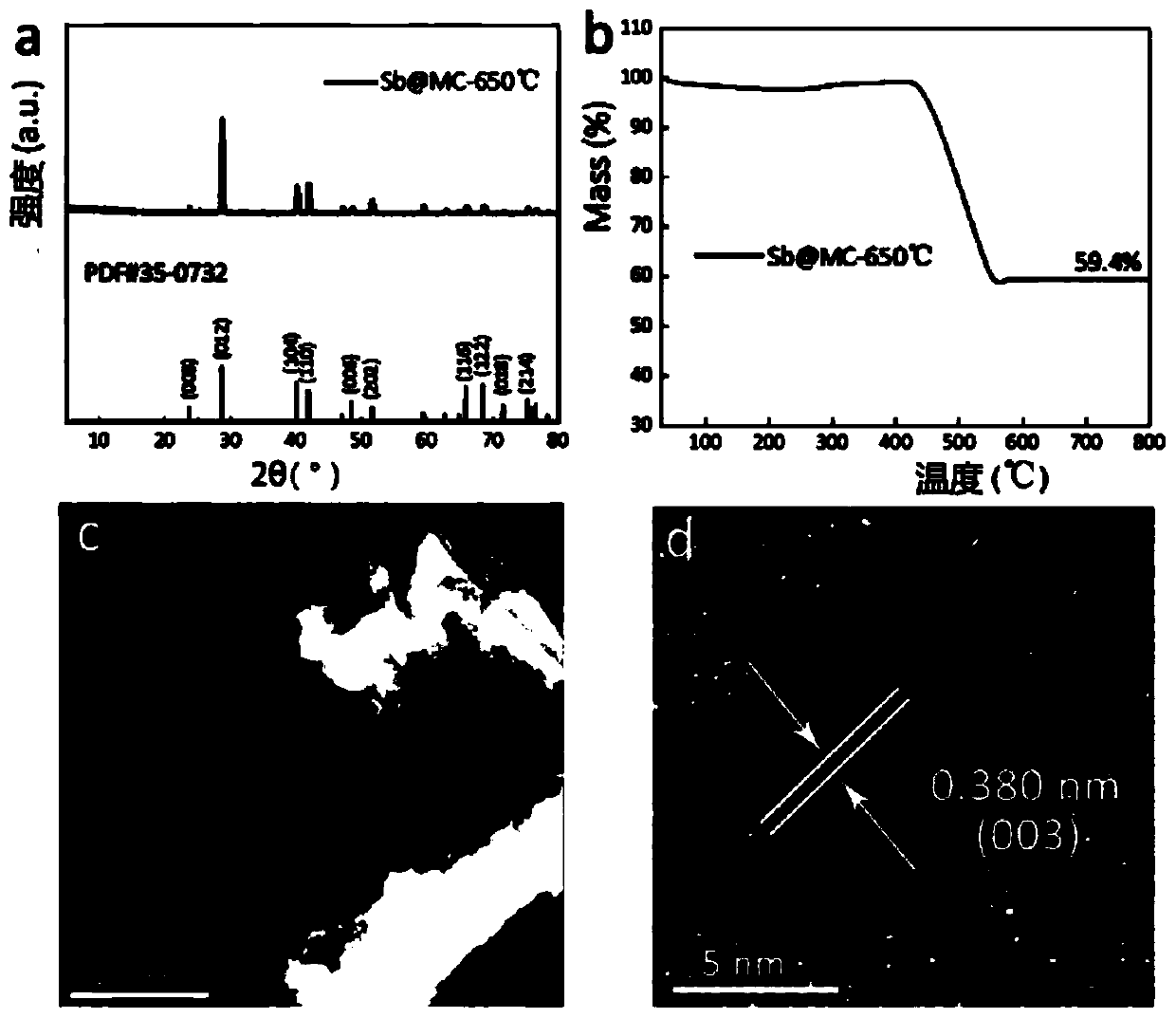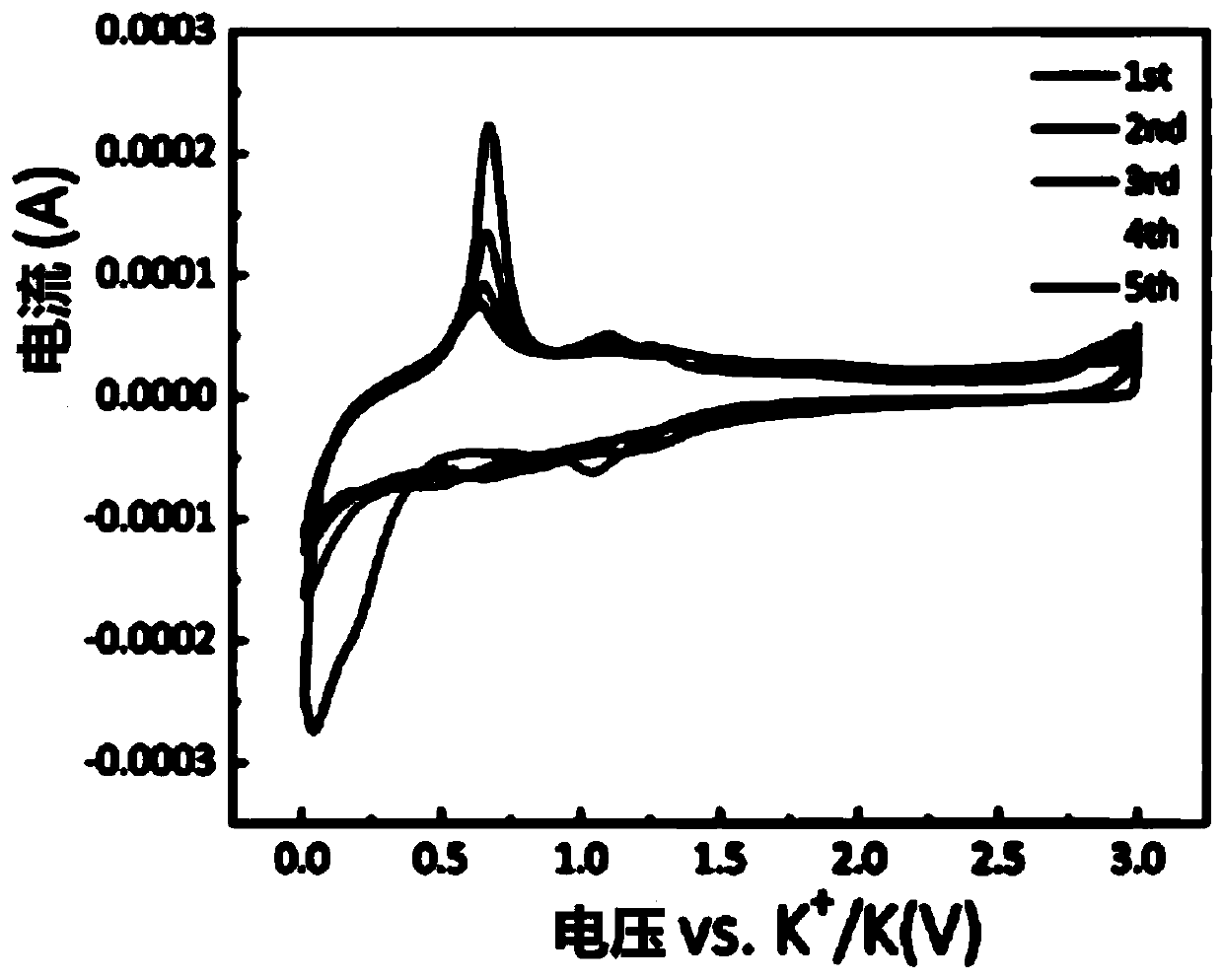Preparation method of Sb-based ductile carbon composite negative electrode material
A negative electrode material and ductile technology, which is applied in the field of preparation of antimony/ductile carbon composite negative electrode materials, can solve the problems of limited electrode cycle stability, shorten the diffusion and migration distance, increase stability, and buffer volume expansion Effect
- Summary
- Abstract
- Description
- Claims
- Application Information
AI Technical Summary
Problems solved by technology
Method used
Image
Examples
preparation example Construction
[0027] refer to figure 1 , a preparation method of antimony / ductile carbon composite negative electrode material, said method comprising the steps of:
[0028] S01, metal salt and citric acid are dissolved in deionized water, obtain uniform transparent solution, and described metal salt is antimony chloride (SbCl );
[0029] S02, adding the graphene oxide solution into the transparent solution, and continuously stirring, the continuous stirring time is 20-90min, to obtain a uniform mixed solution;
[0030] S03, the mixed solution is quickly frozen, and the solid is removed by freeze-drying to obtain a spongy sample;
[0031] S04, grinding the spongy sample into a fine powder to obtain a mixed powder;
[0032] S05. Carry out heat treatment to the composite powder, the heat treatment process: put the composite powder into a quartz boat, then place the quartz boat in a tube furnace, and then in a hydrogen and argon atmosphere, the volume of the hydrogen and argon The ratio is ...
Embodiment 1
[0035] like figure 1 As shown, first S01, antimony chloride (SbCl 3 ) and citric acid were dissolved in deionized water to obtain a uniform transparent solution;
[0036] Then S02, graphene oxide (GO) solution is added in above-mentioned homogeneous transparent solution, and continuous stirring 30min, obtains uniform mixed solution;
[0037] Then S03, the mixed solution is snap-frozen, and the solid is removed by freeze-drying to obtain a spongy sample;
[0038] S04 grinds the spongy sample into a fine powder again to obtain a mixed powder;
[0039] Finally S05 heat-treats the resulting mixed powder, that is, the composite powder is put into a quartz boat, and then the quartz boat is placed in a tube furnace, and then heated in hydrogen (H 2 ) and argon (Ar) atmosphere (V / V=10 / 90), at 5°C min -1 The heating rate was increased to 650°C, and the temperature was maintained for 3 hours to obtain an antimony / ductile carbon composite negative electrode material.
[0040] like ...
Embodiment 2
[0045] First, antimony chloride (SbCl 3 ) and citric acid were dissolved in deionized water to obtain a uniform transparent solution;
[0046] Next, the graphene oxide (GO) solution was added to the above-mentioned uniform transparent solution, and continued to stir for 60 minutes to obtain a uniform mixed solution;
[0047] Then, the mixed solution was snap-frozen, and the solids were removed by freeze-drying to obtain a sponge-like sample;
[0048] Then the sponge sample is ground into a fine powder to obtain a mixed powder;
[0049] Finally, the resulting mixed powder is heat-treated, that is, the composite powder is put into a quartz boat, and then the quartz boat is placed in a tube furnace, and then heated in hydrogen (H 2 ) and argon (Ar) atmosphere (V / V=10 / 90), at 4°C min -1 The heating rate was increased to 600°C, and the temperature was maintained for 5 hours to obtain an antimony / ductile carbon composite negative electrode material.
PUM
 Login to View More
Login to View More Abstract
Description
Claims
Application Information
 Login to View More
Login to View More - R&D
- Intellectual Property
- Life Sciences
- Materials
- Tech Scout
- Unparalleled Data Quality
- Higher Quality Content
- 60% Fewer Hallucinations
Browse by: Latest US Patents, China's latest patents, Technical Efficacy Thesaurus, Application Domain, Technology Topic, Popular Technical Reports.
© 2025 PatSnap. All rights reserved.Legal|Privacy policy|Modern Slavery Act Transparency Statement|Sitemap|About US| Contact US: help@patsnap.com



